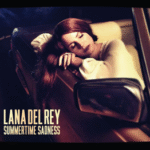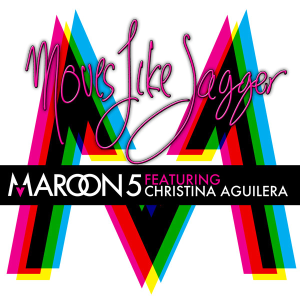 When Lana Del Rey released “Summertime Sadness” in 2012, it felt like a cinematic dream collapsing under the weight of its own beauty. It wasn’t just a song—it was a mood, a vision, and a paradox. How could a track that sounds like it’s melting in the August heat also feel so cold and lonely? How could something drenched in glamour and nostalgia still ache with emptiness? That’s the contradiction at the heart of Del Rey’s art, and “Summertime Sadness” is its purest distillation. The track—featured on her breakthrough album Born to Die—became one of the defining songs of the 2010s, a melancholic anthem that fused heartbreak, cinematic drama, and ethereal pop into something timeless. It was as if she captured the feeling of a doomed summer romance and trapped it inside a faded Polaroid.
When Lana Del Rey released “Summertime Sadness” in 2012, it felt like a cinematic dream collapsing under the weight of its own beauty. It wasn’t just a song—it was a mood, a vision, and a paradox. How could a track that sounds like it’s melting in the August heat also feel so cold and lonely? How could something drenched in glamour and nostalgia still ache with emptiness? That’s the contradiction at the heart of Del Rey’s art, and “Summertime Sadness” is its purest distillation. The track—featured on her breakthrough album Born to Die—became one of the defining songs of the 2010s, a melancholic anthem that fused heartbreak, cinematic drama, and ethereal pop into something timeless. It was as if she captured the feeling of a doomed summer romance and trapped it inside a faded Polaroid.
The Birth of a Mood
By 2012, Lana Del Rey had already sparked both adoration and controversy. Her debut single “Video Games” had announced her as a mysterious, retro-glam figure—part Nancy Sinatra, part David Lynch muse. Critics debated her authenticity, but fans felt the honesty in her sadness. When “Summertime Sadness” was released as the fourth single from Born to Die, it solidified her aesthetic: a haunting blend of vintage Americana, doomed love, and cinematic grandeur.
Written by Lana Del Rey and Rick Nowels, the song channels heartbreak through imagery that feels both romantic and tragic. The lyrics read like fragments of a movie script: “Kiss me hard before you go / Summertime sadness / I just wanted you to know / That baby, you’re the best.” Every line is draped in longing, every note soaked in nostalgia. It’s not about a specific heartbreak—it’s about the feeling of loss, the kind that follows you long after the sun has set and the party’s over.
Nowels’ production plays a crucial role in shaping that mood. The song blends strings, echoing drums, and Del Rey’s hauntingly layered vocals into something that feels both epic and intimate. The result is a soundscape that evokes late summer evenings—the kind where the air is thick, the light is fading, and something beautiful is ending.
Between Glamour and Grief
“Summertime Sadness” works because it walks a tightrope between beauty and despair. The title itself is an oxymoron—summer, the season of warmth and freedom, paired with sadness, the emotion of endings and loss. Del Rey turns that contrast into poetry. Her voice drips with sensuality even as it trembles with sorrow.
In interviews, Lana has hinted that the song was inspired by deep emotional pain, possibly tied to losing a close friend. Whether literal or metaphorical, that grief is palpable in her performance. She sings as if she’s saying goodbye to something bigger than a person—perhaps youth itself, or the ideal of perfect love.
Musically, the track mirrors that push and pull. The verses are soft and dreamy, while the chorus swells with cinematic intensity. The melody feels like it’s climbing toward the sun only to fall back into shadow. It’s that dynamic—light and dark intertwined—that gives the song its emotional power.
The Video: Death, Devotion, and Dream Logic
The music video for “Summertime Sadness,” directed by Kyle Newman and Spencer Susser, adds another layer of meaning. Starring Lana Del Rey and actress Jaime King, the video is both beautiful and haunting. It portrays two lovers—often interpreted as a same-sex couple—whose relationship ends in tragedy. Through hazy, dreamlike imagery, the video depicts one woman’s suicide and the other’s grief, blending romance and loss into a surreal visual poem.
What makes the video so striking is its commitment to atmosphere. Every frame looks like it’s been dipped in sunset—the colors saturated, the motion slowed, the emotion raw. It’s not about literal storytelling but about mood and feeling. It’s that aesthetic—tragic, nostalgic, and cinematic—that would come to define Lana Del Rey’s visual universe.
When “Summertime Sadness” gained traction, especially after its remix success (which we’ll get to), the video took on even greater significance. It wasn’t just a sad love story; it became a visual shorthand for the way Del Rey saw the world—beautiful but doomed, romantic but fatalistic.
The Remix That Changed Everything
Interestingly, “Summertime Sadness” didn’t become a global hit until a year after its release. In 2013, German DJ Cedric Gervais released a remix of the song that transformed it into a club anthem. The remix shot up the charts, reaching number six on the Billboard Hot 100 and earning Del Rey her first major pop radio breakthrough.
The Gervais version stripped away the melancholy instrumentation and replaced it with pulsing electronic beats and drops—but the irony is that the sadness still remained. Even as people danced to it in nightclubs, the lyrics retained their sense of loss. The remix turned “Summertime Sadness” into an anthem for emotional release on the dance floor—a cathartic cry disguised as a party track.
That duality helped solidify Lana Del Rey’s influence. She wasn’t just making sad songs; she was creating moods that transcended genre. The remix proved that her writing could adapt to different worlds without losing its core essence. Whether in a smoky lounge or a neon-lit club, “Summertime Sadness” resonated with anyone who had ever felt heartbreak and still wanted to feel alive.
The Sound of Cinematic Pop
Part of what made “Summertime Sadness” so groundbreaking was its cinematic scope. Lana Del Rey wasn’t following the trends of pop in 2012—she was building her own world. While radio was dominated by EDM and bubblegum pop, she was crafting something that sounded like a movie soundtrack from another era.
Her influences—film noir, 1960s girl groups, faded Hollywood glamour—were evident in every note. The lush production recalled Phil Spector’s Wall of Sound, while her vocals carried the smoky allure of classic torch singers. Yet the themes—fame, death, disillusionment—were modern and deeply personal.
That fusion created what many called “sadcore,” a genre that didn’t really exist before her. And “Summertime Sadness” was its crown jewel. It wasn’t just a song—it was a feeling, one that listeners could inhabit. It made sadness beautiful, even desirable.
Cultural Resonance and Emotional Universality
Over the years, “Summertime Sadness” has become more than just a hit—it’s become shorthand for a very specific kind of emotion. People use the term to describe that bittersweet ache that comes with nostalgia, memory, or change. It’s the melancholy that hits when summer ends, or when you realize a perfect moment can’t last forever.
Lana Del Rey tapped into a universal truth: that beauty and sadness often coexist. The song’s lyrics—“I got that summertime, summertime sadness”—capture the essence of fleeting joy. It’s not depression, exactly—it’s the recognition that all things, even happiness, are temporary. That’s why the song continues to resonate across generations.
On TikTok and Instagram, “Summertime Sadness” has seen resurgence after resurgence, often soundtracking montages of sunsets, road trips, and wistful reflections. For younger fans who discovered Del Rey after her Norman F**ing Rockwell!* or Did You Know That There’s a Tunnel Under Ocean Blvd eras, this song remains their entry point into her melancholic mythology.
The Artistic Evolution It Foreshadowed
“Summertime Sadness” also foreshadowed the artist Lana Del Rey would become. The lyrical themes—love, loss, nostalgia, death, beauty—would define her career. Each subsequent album has revisited those ideas in new ways, but “Summertime Sadness” was the first time she captured them so completely.
It’s the template for much of her later work: cinematic production, emotionally complex lyrics, and a voice that drips with both strength and fragility. The song’s success proved that there was an audience for this kind of pop music—deeply emotional, unabashedly artistic, and defiantly out of step with trends.
Without “Summertime Sadness,” it’s hard to imagine albums like Ultraviolence or Norman F**ing Rockwell!* reaching the same heights. It gave her the credibility and platform to push boundaries, to write more introspective, poetic songs without worrying about radio play.
The Modern Legacy
More than a decade later, “Summertime Sadness” endures as one of the defining tracks of the 2010s. It’s played at weddings, memorials, clubs, and beach parties alike—a testament to its emotional versatility. Few songs can make you cry and dance in the same breath, but this one does.
The track’s influence can be heard in countless artists who followed—Lorde, Halsey, Billie Eilish—all of whom have drawn inspiration from Del Rey’s ability to blend melancholy and glamour. The song also marked a turning point for pop itself, ushering in an era where mood and atmosphere became as important as melody and hooks.
Lana Del Rey didn’t just write a hit; she changed the emotional vocabulary of pop music. “Summertime Sadness” gave people permission to romanticize their pain, to find beauty in melancholy, and to see heartbreak as something cinematic rather than tragic.
The Eternal Sunset
What makes “Summertime Sadness” timeless is that it captures a universal human experience: the awareness that all joy is fleeting. The song feels like the golden hour before dusk—beautiful, warm, and slipping away. Lana Del Rey doesn’t fight that impermanence; she embraces it. Her voice trembles with the acceptance that love ends, summers fade, and everything that shines eventually dims.
And yet, she makes that realization feel empowering. To feel deeply—to love, to lose, to remember—is what gives life meaning. That’s the paradox of “Summertime Sadness.” It’s about endings, but it’s also about the beauty of having lived something worth missing.
Conclusion: A Sadness That Never Ends
When Lana Del Rey recorded “Summertime Sadness” in 2012, she might not have known she was writing an anthem for a generation. But that’s what it became—a song that crystallized the beauty of sorrow and the poetry of impermanence.
It remains one of her most beloved tracks because it’s both deeply personal and profoundly universal. Whether you’re mourning a love, a season, or simply the passage of time, “Summertime Sadness” offers solace in its shimmering sadness.
Like the final rays of sunlight before night falls, it reminds us that beauty is always fleeting—and that’s exactly why it matters. In that sense, “Summertime Sadness” isn’t just a song. It’s a state of mind—a place where love, loss, and longing meet beneath an endless sunset.


